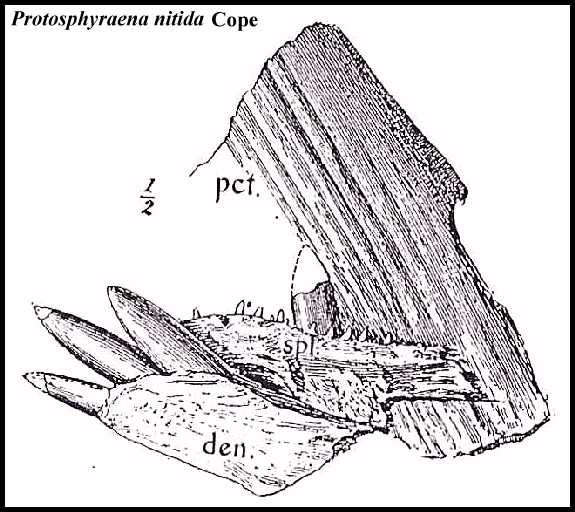| 280
PROCEEDINGS OF THE ACADEMY OF
...
Prof. COPE defined a genus of
Saurodont Fishes from the Niobrara Cretaceous of Kansas, under the name of ERISICHTHE.
He stated that it agreed with Portheus and Ichthyodectes in the
absence of nutritious dental foramina on the inner face of the
NATURAL SCIENCES OF PHILADELPHIA
281
dentary bone, and especially with Portheus in the irregular sizes of the
teeth. The crowns are, however, compressed and knife-like, and closely similar to those of
Saurocephalus [Harlan,
1824]. The typical species was called Erisichthe nitida, and was stated to have
been discovered in the cretaceous formation of Kansas, near to the Solomon River, by Prof. B. F. Mudge. The enamel of the teeth is smooth and
glistening, and their outline acuminate and rather elongate. In the anterior part of the
jaw are two teeth much larger than the others, separated by a small tooth. The posterior
of these is much compressed, while the anterior is oval in section, with one angular edge.
Length of the restored skull between one and two feet.
It was added that the Portheus angulatus, Cope,
probably belongs to the genus Erisichthe, and that it differs from E. nitida in
its greater size and other features. The genus was further stated to be abundant in
certain formations of the Southern States, and in the English chalk. Isolated specimens of
large teeth from the latter had been referred to the genus Saurocephalus in the Poissons
Fossiles, which could not be distinguished from those of the genus newly described.
|

